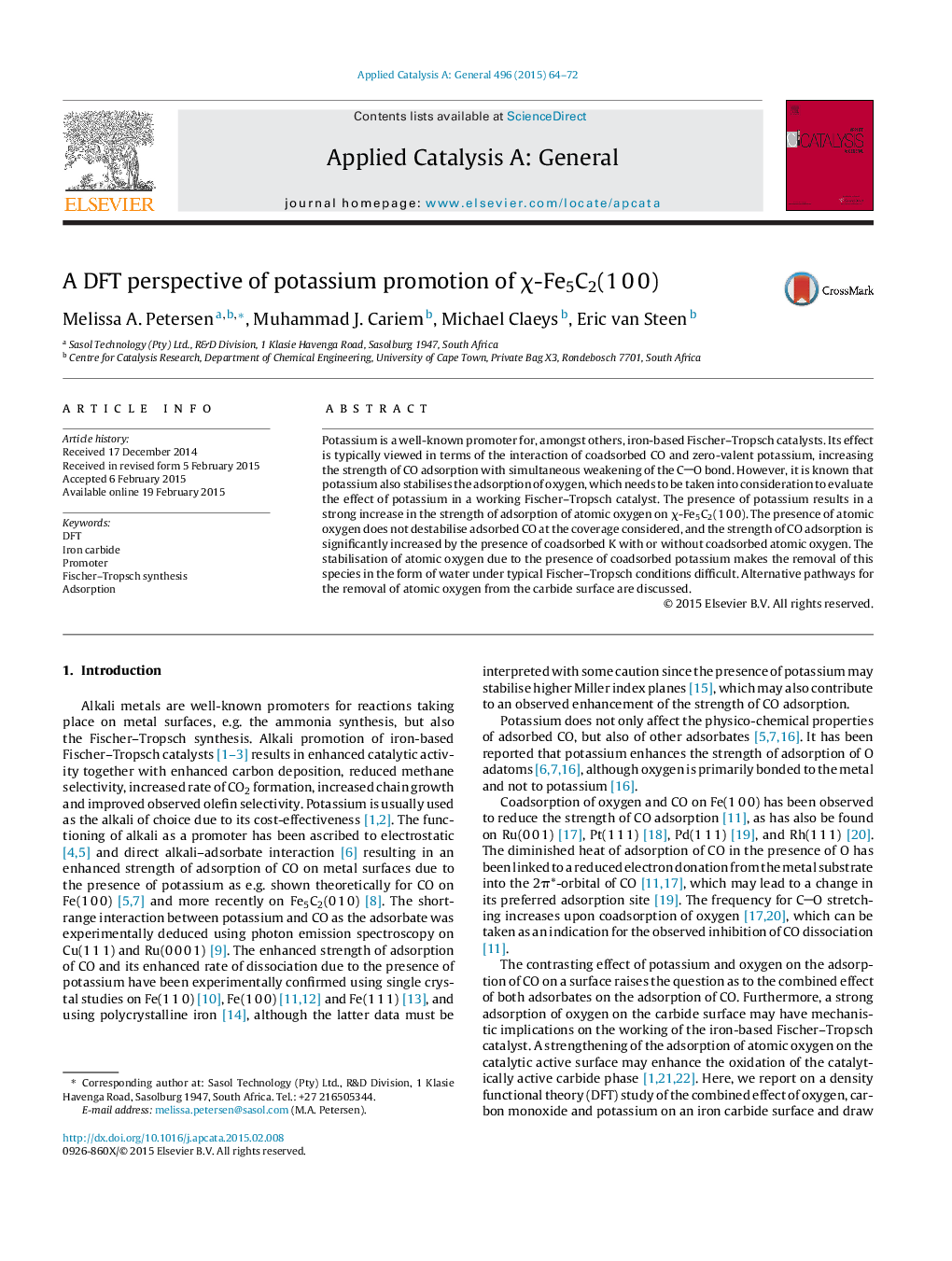| Article ID | Journal | Published Year | Pages | File Type |
|---|---|---|---|---|
| 39352 | Applied Catalysis A: General | 2015 | 9 Pages |
•Adsorption and coadsorption of K, CO and O on Fe5C2(1 0 0) are investigated with DFT.•Potassium stabilises both adsorbed CO and O on the iron carbide surface.•CO and O exhibit minimal lateral interaction when coadsorbed.•Oxygen removal as H2O or CO2 is thermodynamically unfavourable in the presence of K.
Potassium is a well-known promoter for, amongst others, iron-based Fischer–Tropsch catalysts. Its effect is typically viewed in terms of the interaction of coadsorbed CO and zero-valent potassium, increasing the strength of CO adsorption with simultaneous weakening of the CO bond. However, it is known that potassium also stabilises the adsorption of oxygen, which needs to be taken into consideration to evaluate the effect of potassium in a working Fischer–Tropsch catalyst. The presence of potassium results in a strong increase in the strength of adsorption of atomic oxygen on χ-Fe5C2(1 0 0). The presence of atomic oxygen does not destabilise adsorbed CO at the coverage considered, and the strength of CO adsorption is significantly increased by the presence of coadsorbed K with or without coadsorbed atomic oxygen. The stabilisation of atomic oxygen due to the presence of coadsorbed potassium makes the removal of this species in the form of water under typical Fischer–Tropsch conditions difficult. Alternative pathways for the removal of atomic oxygen from the carbide surface are discussed.
Graphical abstractFigure optionsDownload full-size imageDownload high-quality image (149 K)Download as PowerPoint slide
